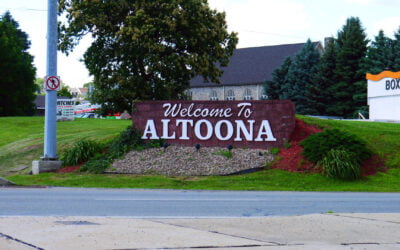Comparing Advertising on Facebook and LinkedIn: Unveiling the Key Distinctions
Written By: Indepth Web Design
Introduction
In the rapidly evolving digital landscape, social media platforms have become indispensable for businesses seeking to promote their products or services. Among the many platforms available, Facebook and LinkedIn stand out as two powerhouses for advertising. While both platforms offer valuable marketing opportunities, they cater to distinct audiences and provide unique features that differentiate them from each other. This article will delve into the key differences between advertising on Facebook and LinkedIn, helping businesses make informed decisions about their social media advertising strategies.
User Demographics
One of the fundamental distinctions between Facebook and LinkedIn lies in their user demographics. Facebook boasts an enormous user base, with over 2.8 billion monthly active users worldwide. It appeals to a broad range of demographics, making it suitable for businesses targeting a diverse audience. In contrast, LinkedIn, often referred to as the “professional” social network, caters primarily to a professional and business-oriented audience. It has more than 774 million members, with a focus on networking and career development.
Targeting Capabilities
Both Facebook and LinkedIn provide robust targeting capabilities to reach specific audiences. Facebook’s targeting options are highly advanced, allowing advertisers to refine their campaigns based on factors like age, gender, location, interests, behaviors, and more. Moreover, Facebook’s extensive user data enables advertisers to create custom and lookalike audiences, maximizing the reach of their ads.
LinkedIn, on the other hand, offers targeting options geared towards professional attributes such as job title, industry, company size, seniority, and education. This precision targeting makes it an excellent platform for B2B (business-to-business) marketing, as advertisers can reach decision-makers and professionals in specific industries or organizations.
Ad Formats and Objectives
Facebook and LinkedIn offer distinct ad formats tailored to their respective user experiences. Facebook supports various ad formats, including image ads, video ads, carousel ads, canvas ads, and more. This versatility allows advertisers to choose the format that best suits their campaign goals, whether it’s brand awareness, lead generation, or driving traffic to their website.
LinkedIn, being a professional networking platform, offers ad formats designed to resonate with its audience. Sponsored Content, Sponsored InMail, and Text Ads are the primary ad formats available on LinkedIn. These formats focus on delivering professional content, business messages, and personalized communication to engage the platform’s users effectively.
Content and Engagement
The type of content shared on Facebook and LinkedIn also differs significantly. Facebook encourages a wide variety of content, including personal updates, photos, videos, articles, events, and more. Its emphasis on personal connections and social interactions makes it an excellent platform for building brand awareness, engaging with customers, and fostering a sense of community.
LinkedIn, on the other hand, focuses on professional content related to industry insights, career advice, business news, and thought leadership. As a result, the engagement on LinkedIn tends to be more business-oriented, with users actively seeking professional networking opportunities and industry-specific discussions.
Cost and ROI
The cost of advertising on Facebook and LinkedIn can vary based on several factors, including audience size, competition, ad format, and targeting options. In general, Facebook ads tend to be more cost-effective due to its massive user base and broader reach. LinkedIn, being a niche platform, often commands higher advertising costs, particularly for B2B-focused campaigns targeting specific professional attributes.
When evaluating return on investment (ROI), businesses should consider their target audience and campaign objectives. While Facebook can generate significant reach and engagement, LinkedIn offers a unique advantage for B2B marketing by providing access to decision-makers and professionals in specific industries.
Conclusion
In the realm of social media advertising, both Facebook and LinkedIn offer distinct advantages depending on the target audience and campaign objectives. Facebook’s massive user base, advanced targeting options, and versatile ad formats make it an ideal platform for businesses aiming to reach a wide range of demographics and achieve broad brand awareness. It excels at building communities, fostering engagement, and driving traffic to websites.
On the other hand, LinkedIn’s focus on professionals and its precise targeting options make it a powerful tool for B2B marketing and reaching decision-makers in specific industries. Its ad formats cater to a more business-oriented audience, providing opportunities for thought leadership, professional networking, and targeted communication.
When deciding between Facebook and LinkedIn for advertising, businesses should consider their target audience, campaign goals, and budget. Conducting thorough market research and understanding the unique strengths of each platform will help optimize ad campaigns and maximize return on investment.
It’s also worth mentioning that the choice between Facebook and LinkedIn doesn’t have to be exclusive. Depending on the marketing strategy and resources available, businesses can leverage the strengths of both platforms by running complementary campaigns that align with their specific objectives and target different segments of their audience.
Ultimately, successful social media advertising requires continuous monitoring, testing, and optimization. Regularly analyzing campaign metrics, adjusting targeting parameters, and refining ad creative based on performance data will help businesses adapt their strategies and achieve the best results on either Facebook or LinkedIn.
In conclusion, while Facebook and LinkedIn differ in user demographics, targeting capabilities, ad formats, and content engagement, both platforms offer valuable advertising opportunities. By understanding these differences and aligning them with their marketing goals, businesses can make informed decisions about where to invest their advertising efforts and effectively connect with their desired audiences.
Request A Quote
More Posts
Organic Social Media Practices: 9 Power-Packed Tips for Dominating the Altoona, PA Market
Unlock the potential of your social media presence with effective organic social media practices. Discover 9 power-packed tips to dominate the Altoona, PA market and connect with your audience.
12 Powerful Digital Marketing Practices for Your Atloona Small Business: An Internet Marketing Company’s Guide
By leveraging the power of digital marketing techniques such as SEO, social media management, content creation, and more, we ensure that your brand shines across the digital spectrum.
Altoona, PA Web Design and SEO by Indepth Web Design: Elevate Your Online Presence with a Leading Agency
Our team of experts specializes in providing top-notch web design and SEO solutions tailored to meet the unique needs of businesses in the Altoona, PA region.



0 Comments